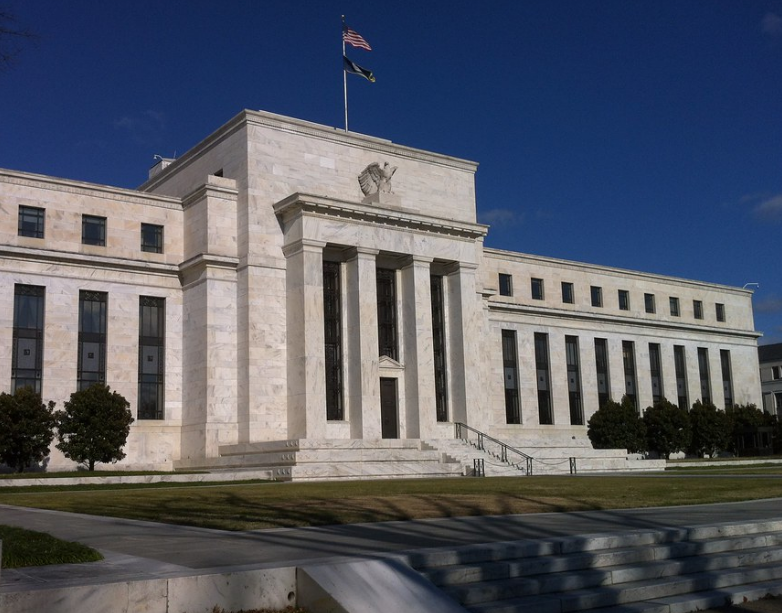The Federal Reserve just slashed interest rates by a quarter point and called time on its balance sheet slim-down, sending shockwaves through the crypto world. Bitcoin plunged, triggering a massive $795 million in liquidations that wiped out traders overnight. What does this mean for your investments, and could more volatility be on the way?
The U.S. Federal Reserve made headlines on October 29, 2025, by cutting its benchmark interest rate by 0.25 percentage points. This sets the new federal funds rate at 3.75% to 4.00%. The decision came amid a government shutdown that limited economic data, but the Fed pushed forward with a 10-2 vote.
Officials also announced the end of quantitative tightening, or QT, starting December 1. QT involved shrinking the Fed’s massive balance sheet by not replacing maturing securities. Since it began, the Fed has reduced holdings by about $2 trillion, bringing the balance sheet below $6.4 trillion.
This move aims to ease financial conditions and support economic growth. Lower rates make borrowing cheaper, which could boost spending and investment. But with inflation still a concern, Chair Jerome Powell warned that future cuts might slow down.
The last rate cut happened in September 2025, marking a shift from years of hikes to combat rising prices.
Crypto Market Turmoil: $795 Million in Liquidations
Bitcoin took a sharp dive right after the announcement, dropping to $109,200. This triggered a wave of forced sales across the crypto market.
Traders faced over $795 million in liquidations in a single day, with most hitting long positions betting on price rises. Ethereum and other altcoins also slipped, with the total crypto market losing about 2% of its value.
Analysts point to the “sell the news” effect. Many investors had priced in the rate cut, so the actual event sparked profit-taking. Powell’s cautious tone about future easing added to the unease, as markets had hoped for quicker cuts.
In just one hour, liquidations topped $300 million, mostly from optimistic bets gone wrong. This highlights the high leverage in crypto trading, where small price swings can lead to big losses.
Volatility spiked, with Bitcoin falling below key support levels before stabilizing somewhat.
Broader Impacts on Stocks and Economy
The Fed’s actions rippled beyond crypto. Stock markets wobbled, with major indexes like the Nasdaq hitting new highs briefly before pulling back.
Lower rates often fuel riskier assets like tech stocks and cryptocurrencies by increasing global liquidity. Yet, this time, the response was mixed. Bond yields dropped 2-3%, and the dollar index fell 1%, signaling shifts in investor sentiment.
For everyday people, this could mean cheaper loans for homes or cars, but it also raises questions about inflation creeping back. The Fed’s balance sheet moves, including ending QT, might inject more money into the system, potentially lifting asset prices over time.
Experts from places like Bitcoin Magazine note this as the second straight cut, following patterns from past cycles that boosted Bitcoin.
- Positive effects: More liquidity could drive crypto rallies in the coming months.
- Risks: If inflation picks up, the Fed might pause cuts, hurting volatile markets.
- Historical context: Similar cuts in 2019 and 2020 preceded Bitcoin surges.
Commodities like gold also rose, showing a flight to safe havens amid uncertainty.
What Investors Should Watch Next
With the Fed signaling a careful approach, markets now eye upcoming data like jobs reports and inflation figures. The October 29 meeting lacked full data due to the shutdown, so November’s info will be key.
Crypto enthusiasts are buzzing about potential altcoin seasons, where smaller coins outperform Bitcoin. Posts on X highlight bullish views, with some predicting 100x gains for select tokens if liquidity floods in.
But caution rules. High volatility means quick gains or losses. Traders should monitor options expiries, like the $14.4 billion one coming Friday, which could add more swings.
In the bigger picture, this policy shift aligns with global trends. Other central banks might follow, creating a favorable environment for digital assets.
The Fed’s repo operations and treasury purchases in the past have acted as “stimulus” for Bitcoin, as noted in historical analyses.
| Key Metric | Before Cut | After Cut |
|---|---|---|
| Federal Funds Rate | 4.00%-4.25% | 3.75%-4.00% |
| Bitcoin Price | ~$112,000 | $109,200 |
| Daily Liquidations | N/A | $795M |
| Balance Sheet Size | ~$6.4T | Shrinking ends Dec 1 |
This table shows the immediate shifts, underlining the market’s knee-jerk reaction.
As a seasoned journalist who’s covered countless market twists, I see this as a pivotal moment where policy meets speculation. The Fed’s moves often set the tone for years, and crypto’s response shows its growing tie to traditional finance.
The Federal Reserve’s rate cut and QT halt mark a turning point that could spark economic recovery but also stirs up market storms, as seen in the crypto sector’s hefty liquidations. This blend of easing and caution leaves investors hopeful yet wary, reminding us that big policy shifts can reshape fortunes in an instant.


 Bitcoin
Bitcoin  Ethereum
Ethereum  Solana
Solana  Cardano
Cardano  Chainlink
Chainlink  Avalanche
Avalanche  Sui
Sui  Polkadot
Polkadot  Mantle
Mantle  Bittensor
Bittensor  NEAR Protocol
NEAR Protocol  Internet Computer
Internet Computer  Quant
Quant  Aptos
Aptos  Algorand
Algorand  Cosmos Hub
Cosmos Hub  Arbitrum
Arbitrum  Filecoin
Filecoin  Render
Render  Sei
Sei  Jupiter
Jupiter  Optimism
Optimism  Injective
Injective  Stacks
Stacks  The Graph
The Graph  Celestia
Celestia  Pyth Network
Pyth Network  Flow
Flow  Immutable
Immutable  THORChain
THORChain  MultiversX
MultiversX  dYdX
dYdX  Akash Network
Akash Network  Illuvium
Illuvium  Metis
Metis  Manta Network
Manta Network  Dymension
Dymension  Kujira
Kujira